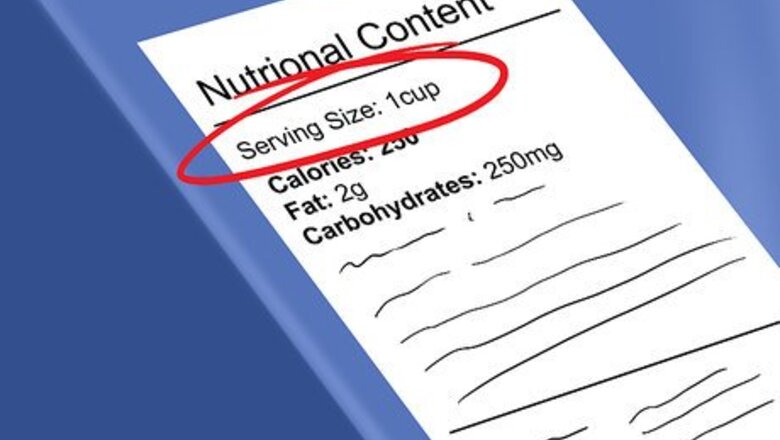
views
Reading the Food Label
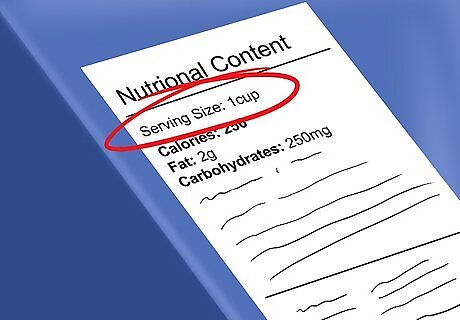
Look for the serving size. No matter what food you're looking at or what nutrient you're tracking, the first thing you need to take note of is the serving size. The serving size is one of the first pieces of information listed on the nutrition fact panel. It's generally listed right under the title "Nutrition Facts." You will see how much one serving of the food item is and how many servings are in the container. If it's a single-serving container or package it may say "one package" or "contains one serving." All of the information listed in the nutrition fact panel is based on one serving. So if there are multiple servings per container, you'll need to make sure you only consume one serving to match up with the information listed.
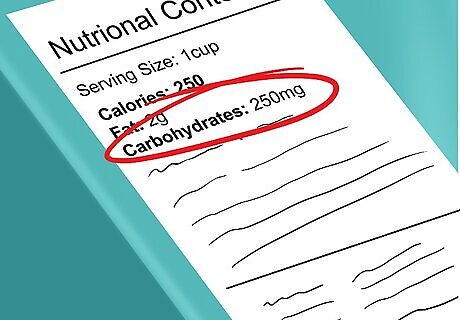
Find "Total Carbohydrates." Total carbohydrates are one of the main, bolded headings on the nutrition fact panel. Total carbohydrates are listed after sodium and before protein on the food panel. Total carbohydrates include the sugar, fiber, and starch (not listed on the label) of the food you're eating. High quantities of sugar will make the total carbohydrate level high as well.
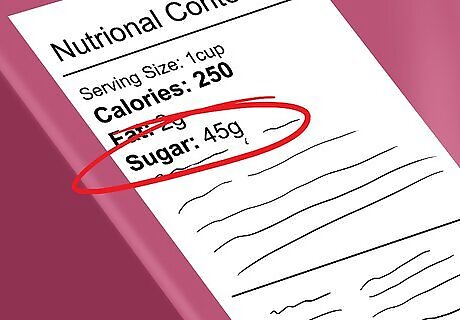
Note the total sugar amount. After finding total carbohydrates, you will see the listing for the total amount of sugar in one serving of the product. It may be shown as “added sugar” listed under the total carbohydrates. Record the total amount of sugar in one serving. If you eat more than one serving, multiply the total sugar amount by how many servings you have. For example, if one serving has 5 grams of sugar, but you had 3 servings, you consumed 15 g of sugar total. Note that as of now, the amount of sugar listed here includes both added and natural sugars. You will need to read the ingredient label to find out if there is added sugar in your product.

Read the ingredient label. Unfortunately, food companies can add a lot of sugar to foods without necessarily showing it on the nutrition fact panel. A common example is evaporated cane juice, which is the same thing as sugar. The ingredient list is listed right underneath or immediately next to the nutrition fact panel. The ingredients are listed in order of the most prevalent. For example, the first ingredient listed is found in the highest quantities in the food while the last ingredient is found in the lowest quantity in the food. Read each ingredient and look for any added sugars listed. At this time you can't calculate how many grams of sugar are from added sugars or are coming from natural sugars.
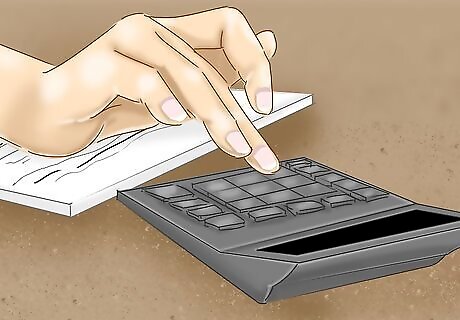
Calculate sugar in homemade goods. If you make many of your foods at home you won't have a nutrition fact panel to help you figure out how much sugar is in the foods you make. Use your recipe for a guide. Make sure to measure out exactly how much sugar you add (especially if this is your own recipe or you change the recipe as you go). Research ingredients containing sugar that you're using. For example, chocolate chips or peanut butter will have sugar in them. Look at their food labels or look them up on an online food database for nutrient information. For example, if you're making cookies add the amount of added sugar you used to make the entire batch. If you make 30 cookies and it takes 1 cup of sugar to make the cookies, then you divide the number of cookies by the total grams in a cup of sugar (which is 200 grams). For instance, 30 cookies at 200 grams would be 6.7 grams of sugar per cookie. Many food diary apps also allow you to input your own recipes and will calculate all nutrient amounts per serving including sugar.
Counting Your Total Sugar Intake
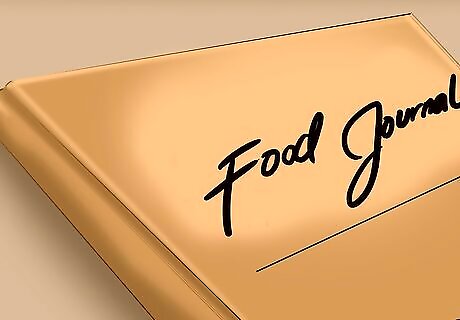
Start a food journal. Whenever you're tracking any component of your diet, it's smart to start a food journal. This ongoing tally can help you get a good look into what you're eating. Use either a hard copy journal or set up an online food journal or use a smartphone app. Sometimes online or app versions of the journal make calculating your total sugar intake easy as they do a lot of the math for you. Record everything you eat and drink each day. All meals, snacks, beverages, and even a few bites while you're cooking. Recording everything that goes into your mouth will make your end total more accurate. Try to measure or weigh your foods (especially those that are not divided into appropriate portion sizes) for the most accurate count. Keep your journal with you so you don't forget to record items that you ate while you were out.
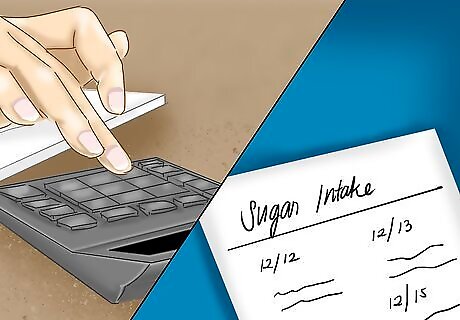
Tally up your sugar count. As you go through your day tally up the total sugar found in each of your meals, snacks, and beverages. Counting your total sugar intake at the end of the day doesn't allow you to make any adjustments to your diet. For example, if you want to lower your sugar intake, you may skip an afternoon snack if you notice your daily total is higher than where you'd like it to be. Use an online food database or app to help you figure out how much sugar is in your food if you don't have a food label for the item. Try to track your total sugar intake for an entire week - including weekends. This will give you a great perspective of your typical diet. You may even want to take an average of your sugar intake as each day is a little different.

Differentiate between added sugar and natural sugars. While you're tracking your total sugar intake, it may also be useful to track how much of that sugar is added and how much is natural. Refer to the ingredient label to see what types of sugar may be added to your foods. It can be listed as: sugar, cane sugar, rice syrup, corn syrup, cane juice, honey, agave syrup, high fructose corn syrup, or corn syrup solids. Natural sugar, although still sugar, usually comes with additional benefits. For example, there is sugar in fruit (fructose) and sugar in dairy (lactose). Although it's still considered sugar, the fruit has fiber, vitamins, and minerals and the dairy has protein and calcium. All worthwhile nutritional benefits to these foods. Added sugars are typically added to foods during their processing. For example, sugar added in desserts, sweetened beverages, or candy. Added sugars do not typically come with the same nutritional benefits as natural sugars. Some foods may have both natural and added sugars. This will make it difficult to tell exactly how many grams are from the added sugar. For example, regular applesauce generally has some added sugars but also natural sugars from the apples.
Adjusting Your Sugar Intake
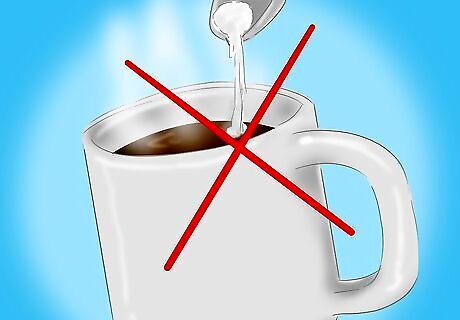
Limit added sugars. If you've kept your food journal and tracked your total sugar intake and feel that it's too much, you may want to decrease your total sugar intake each day. Decreasing added sugars is an easy place to start. These are more obvious foods and when you limit your consumption of them, can cut out a good chunk of your total sugar intake daily. Skip sweetened beverages like coffee drinks, sodas, fruit juices, alcohol, energy drinks, and sports drinks. Skip sweetened foods like candy, cookies, cakes, ice cream, pastries, sweetened nut butters, honey, agave syrup, and maple syrup. Skip sweet condiments and sauces like ketchup, tomato sauce, barbecue sauce, and salsa. Also be wary of diet or low-fat foods. Many foods will decrease their total fat or calories and replace those items with more sugar (or salt). Review some of your favorite low-fat or "diet" items to see if there is any added sugar in the ingredient list.
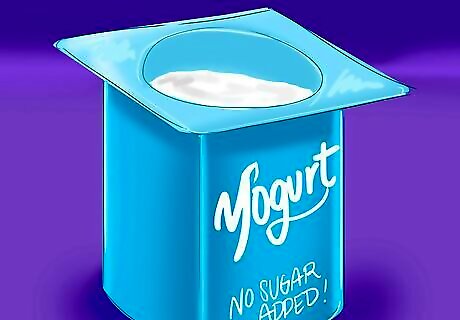
Monitor natural sugar. Although natural sugars do contain some nutritional benefits, too much can still have negative side effects. Natural sugars are found in foods including: dairy products (especially yogurt and milk), fruits, and some starchy vegetables (like peas, carrots, or sweet potatoes). These foods shouldn't necessarily be restricted, but the amount you eat should follow recommended serving sizes and be adjusted if necessary. For example, a diabetic who eats 4-5 servings of fruit daily might have more difficulty managing their blood sugar due to the fructose in the fruit.
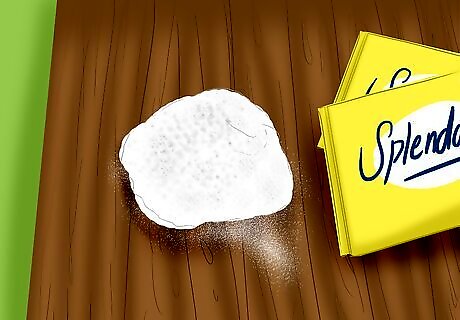
Consider sugar substitutes. There is conflicting evidence about artificial and no-calorie sweeteners. However, if you really want to cut out your sugar intake but still want to sweetened foods or beverages you may want to consider using a sugar substitute. Always consult your doctor prior to adding any artificial sugars or other foods to your diet. They will be able to tell you if they are safe or appropriate for you and your current health conditions. Although these types of sugar are labeled as "no-calorie" you shouldn't use them in excess. There are no long-term studies on the safety of large quantities of these types of sugars. In addition, large quantities have been shown to have some side effects (like migraines) in some sensitive people.












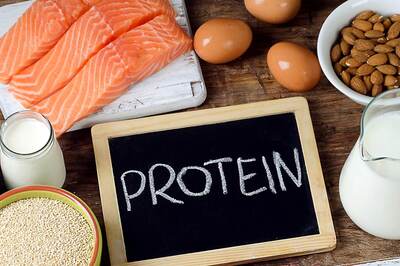







Comments
0 comment